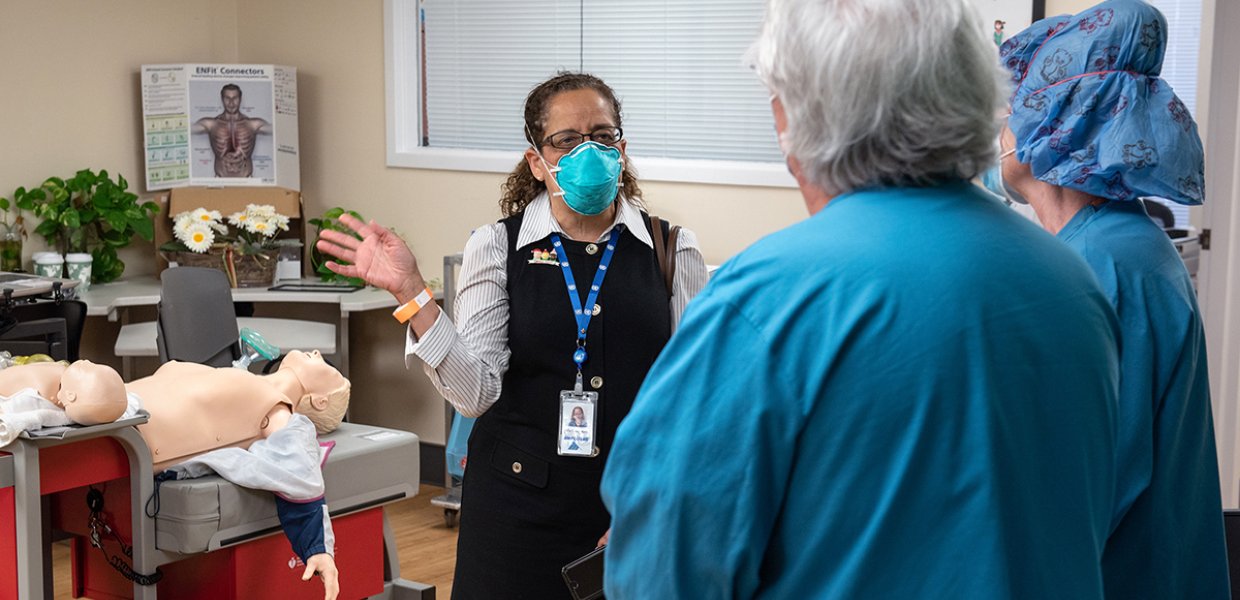Necessity may be the mother of invention, but in ChrisAnna Mink’s case, necessity can also give rise to reinvention. Mink, who graduated in 2015 with a master’s degree in specialized journalism, didn’t come into the program as a student a few years out of college, but instead returned to school after having worked in the health care field since the late 80s.
Raised by her grandparents in Zanesville, Ohio, Mink attended medical school in Virginia and started her career in vaccine research. She was living in Missouri with her husband and infant son when she was recruited to Los Angeles in 1996 to work at Harbor-UCLA Medical Center as a clinical professor of pediatrics. Here, she served underrepresented pediatric populations. “It's a safety net hospital for Los Angeles County,” she said. “Not every kid had insurance, but we would take them. As an adult, I became more aware of the inequities in the system — and that we needed to do much better.”
In 2003, while at Harbor-UCLA, one of the big group homes for youth in foster care, the MacLaren Children’s Center in El Monte, Calif., was closed down due to alleged abuses. The hospital then became a hub for those youth who needed medical care. Mink teamed up with another doctor to helm a foster care unit. While working in the center, one of the issues Mink came up against was the need to test babies for possible HIV infection. “We had some babies who were in limbo,” she said. “We either couldn’t find their parents, or they were in jail and social workers didn’t have authorization to grant permission.”
Mink didn’t just bring her clinical skills to bear on the problem. “I started writing about it,” she said. “I thought if I could tell these stories about what these babies faced, then maybe we could change what was happening. This is when I realized I wasn’t that good of a writer.” Mink decided to check out USC Annenberg and cold-called the school. Michael Parks, now-retired professor of journalism and the then-director of the specialized journalism program, picked up the phone, listened to her story and told her she would be a great fit.
While enrolled in graduate courses, Mink continued working with patients and also interned for Hollywood, Health and Society, a program through the Norman Lear Center at USC Annenberg that provides the entertainment industry with accurate and up-to-date information for storylines on health, safety and security.
“One of the best things I got at USC is learning that reporting is a team sport,” she said. “I may go out and talk to someone, but I need someone who's willing to talk to me. Even though I knew how to write a sentence as a medical geek, I learned how you needed to do it so that the readers are with you. It was ridiculously fun to be back in school because I wanted to be – and without the scary pressures of med school.”
After graduating in 2015, Mink interned with the Center for Health Journalism, also located at USC Annenberg. Here she helped guide journalists on how to decipher science for the public. “I wanted to tell the kid stories,” she said. “I wanted people in power to know that there are faces with those statistics.” Once the three-month internship was over, Mink spent the next few years freelance writing – often for the Center for Health Journalism – as well as working part-time as a physician.
In 2019 she saw an announcement on the center’s website about openings with Report for America, a nonprofit organization whose mission is to strengthen communities and democracy through local journalism. She applied, was accepted and started at The Modesto Bee, reporting on children’s health. “I was living in this one-bedroom apartment in Modesto,” she said. “My son had just graduated from college and I took all of his college stuff up there. It’s pretty funny, I didn’t even have any forks that matched.”
Mink has spent the past year and a half writing about topics that are critical to the Central Valley. There was a two-part story on food insecurity, pieces on homeless youth — the realities and the stigma, prior to and during the pandemic. She wrote about the pandemic itself, but one of her favorite pieces focused on the Black Lives Matter movement. She wrote an article about racism and children’s health, which allowed her to find a way to discuss what was happening in the world, while also making it relevant to her beat.
Then, this past winter, when the pandemic took a turn for the worse in Los Angeles County, she took a few weeks of vacation and returned to Harbor-UCLA to help care for young COVID patients. “We were taking adults up to age 30 in the pediatric unit to try and help out,” she said.
Mink sees plenty of common ground between her two professions. “In the clinic, I ask a bunch of questions to a patient to learn about them in order to come up with a diagnosis,” she said. “In journalism, I ask a bunch of questions about a subject to learn about them in order to come up with a story. You can't really do medicine or journalism without being curious.”
